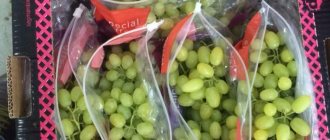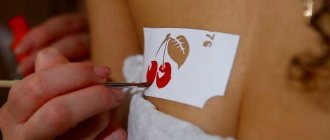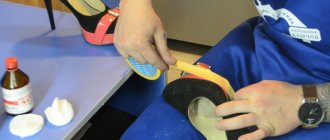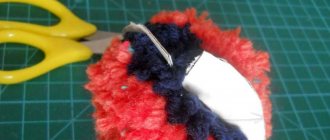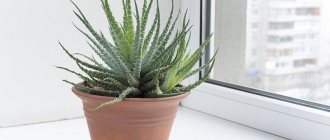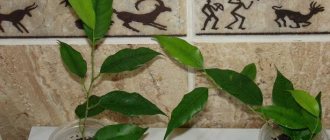Shoes or boots made of velor have excellent external characteristics, a pleasant texture to the touch, lightness and quality. But caring for velor shoes is not at all easy, as they quickly absorb dust and dirt, which seep deep into the leather and spoil its appearance. To preserve the beauty and functionality of such shoes, you should protect them from moisture and liquid dirt, and if they become dirty, follow the recommendations that will help restore your shoes to an elegant look.
Caring for velor shoes
Fabric Features
Natural velor material is made from the skin of pigs and small cattle. For the production of velor, skins with defects on the front side are used, so the outer side of this material is not smooth, but a fleecy inner side, which is called bakhtarma. To obtain high-quality raw materials, it is carefully sanded, resulting in a low and thick pile that has an excellent appearance.
But the fleecy beautiful structure has two main drawbacks - increased fragility and the ability to quickly absorb dirt.
How to clean?
There are a number of recommendations that will help keep shoes with pile in good condition, despite its ability to absorb dust, fear of moisture and ability to wear out quickly. To remove dirt, you need to remember that:
- You cannot wash velor shoes in water - you should start cleaning after the moisture and dirt have completely dried on them.
- To avoid damaging velor shoes with water stains, wash the soles very carefully, avoiding getting moisture on the skin.
- When the shoes are dry, clean them with a rubber or hard hair brush until all dirt is completely removed, avoiding sudden movements so as not to wear off the leather.
- Cleaning helps not only to get rid of dirt, but also to remove residues of care products for velor products. After removing them, you can use colorless sprays or those selected in the required color range for nutrition and care. For this purpose, you can use liquid products that are applied to the shoes with a special sponge-tampon. They will preserve the softness of the leather, its fleecy structure, protect it from drying out, and also refresh its original color.
- It will not be possible to restore the brightness of faded shoes or get rid of serious damage using folk methods alone. To do this, you should use professional tools.
Return to contents
Removing stains
Even following all the rules for caring for velor shoes cannot always protect them from loss of softness, color, contact with dirt and stains on the skin. This problem can be solved using folk methods and professional products for products with a pile surface. A greasy stain on the skin can be removed using purified gasoline. To do this, take a cloth, moisten it with the recommended product and apply it to the stain with light movements. After this procedure, wait for the skin to dry. If traditional methods do not help, then professional helpers in removing stains will be:
- stain removers - foaming sprays;
- liquid stain removers with sponge swabs;
- impregnation with a water-repellent effect;
- brushes of varying degrees of hardness;
- color restorers, dyes.
Return to contents
Drying and storage
Proper care of new shoes
After purchasing a new pair of velor, it is worth treating it with an aerosol or a special emulsion, with the help of which a protective film is formed on the surface of the skin that can repel water, dirt and reagents. A three-time procedure is recommended. The following products are used to treat velor shoes:
A professional spray will protect the material from dirt and moisture.
- Collonil “Carbon Pro” is an impregnation aerosol that creates a protective layer; products treated with this product repel dirt and do not allow water to pass through, and also help preserve color.
- Duke of Dubbin "Duke Velor Cleaner" is a stain-cleaning eraser that is non-greasy. Recommended for use on dry velor. Gets rid of shiny and dirty areas, provided they are treated without strong pressure. Primary impregnation will be the key to the strength of the product in the future. Care products can be made in the form of sprays and often not only protect shoes from external influences, but also help preserve their color.
The main recommendation for cleaning is to start the procedure only after the product has dried. In this case, heating devices must not be used.
Drying lint shoes
Water getting on the product causes the pile to collect into hard lumps that cannot be softened and are not separated into individual fibers after combing with a brush. In this case, it is recommended to use steam. The shoes are held over a bowl of boiling water for a couple of minutes, constantly turning the shoes so that the fibers are a little saturated with moisture. After this procedure, the skin is wiped with a flannel cloth, and after half an hour the velor is treated with a stiff brush.
Removing unpleasant odor
To eliminate odors, you can use special shoe deodorants or proven folk remedies.
A special spray will help get rid of the smell
To help remove the smell:
- soda;
- Activated carbon;
- vinegar;
- hydrogen peroxide;
- alcohol, vodka.
p, blockquote 31,0,0,0,0 —>
Dry products (soda, charcoal) should be poured inside the boots at night. Shake it well in the morning, you can vacuum it at low power.
p, blockquote 32,0,0,0,0 —>
Apply vinegar, peroxide, and alcohol compounds to a cotton pad, wipe the inner surface, and repeat if necessary.
p, blockquote 33,0,0,0,0 —>
The slight smell will be overcome by aroma sachets for clothes or coffee beans placed inside for 3-5 hours.
p, blockquote 34,0,0,0,0 —>
To avoid the appearance of an unpleasant, musty odor, periodically dry your shoes and let them rest for several days. Crumpled newspapers, paper napkins, and silica gel purchased at a hardware store will help absorb dampness - the source of the stench.
Basic rules of care
The benefit of velor shoes is not only their appearance, but also their comfort. It fits well on the foot, is light and durable. It just requires careful treatment of yourself. You can keep it in order by following simple care rules.
When returning home, the owner of a comfortable and beautiful pair should clean it as quickly as possible: do not wait for dust, dirt or snow to penetrate the product. You need to wipe the sole carefully so that water does not leave stains on the upper part.
What should not be done with any leather product also applies to this material.
- It is not recommended to place close to heat sources when shoes need to be dried.
- It should only be stored in its pure form in a shoe box, placing crumpled paper in the toe of the shoe, or using special lasts and spacers.
Interestingly, although velor does not like moisture, it is recommended to hold it for a short time over light steam . This is necessary in order to refresh the look of the shoes and make the pile not too wrinkled.
Treatment of shiny, dented, and tarnished areas is done using an eraser or a piece of thick fabric. There is advice: take fine sandpaper, but in this case you need very light touches to the surface, which do not deform, but straighten the pile.
RESPONSIBILITY: CONDITION
RESEARCH OPTIONAL RESEARCH RESULTS. RESULTS. RESULTS ÑÑ Ñ Ð¿Ð¾Ð¼Ð¾ÑÑÑ ÑÑиÑалÑной маÑÐ¸Ð½Ñ Ð¸ вÑÑнÑÑ, а Ð ´Ð»Ñ Ð¾Ð´ÐµÐ¶Ð´Ñ Ð¸Ð· дѰ¿-велÑÑа пÑиемлема ѾлÑкР¾ SOSÑÑÐ°Ñ ÑиÑÑка мÑгкой ÑеÑкой.
RESULTS ROOM RESULTS.
RESEARCH RESEARCH е ROOM ¸ price дÑÑов. RESPONSIBILITY, RESPONSIBILITY а одним и вÑоÑÑм ѿоÑобом бÑÐ´ÐµÑ Ð²ÑгР»Ð¸Ð´ÐµÐ½ÑиÑно:
- RESULTS ROOM ROOM еÑеÑÑв. RESULTS ››
- RESULTS RESULTS SOS.
- RESULTS Ñежим, а ÑÑÐ¾Ð±Ñ ÑÑиÑаÑÑ ÑÑками ÑÑÐ "Responsiveness" нÑми движениÑми.
- ROOM колиÑеÑÑве обоÑоÑов. RESPONSIBILITY µÐ½Ð´ÑеÑÑÑ.
- RESULTS RESULTS лÑÑей.
RESULTS, ASSURANCE, RESEARCH, RESULTS жен ROCK ´Ð°ÑелÑниÑÑ Ð²ÐµÑей из ÑÑой маѵÑии. RESULTS, RESPONSIBILITIES °ÑÑÑного Ñежима и ÑеÑнологии ÑÑиÑкР© µÐºÑÑÑÑÑ Ð¿Ð¾Ð»Ð¾Ñна.
Care products
One of the best ways to preserve shoes is to use products recommended by manufacturers for impregnating velor. To protect against moisture, they are immediately applied to a new pair (preferably several times for greater effect). After each treatment, the shoes must be dried for at least 3 hours.
These water-repellent agents can be used in the future, after cleaning and caring for moccasins or boots, but the main thing is not to forget about them from the very beginning.
To get rid of stains, you will need a cleaner, which is applied in the form of foam to the dirty surface. Some velor lovers are able to clean it with carpet detergent.
There are simple but reliable products that help with care. For example, wax can be used to carefully process seams. To remove grease stains it is recommended:
- vinegar solution;
- ammonia.
There are aerosols with a special coloring composition that are used to restore color.
A special brush for such shoes (hair or rubber) is used only for dry shoes. When cleaning velor, they do it without much pressure.
In winter, shoes (sometimes worn in cold snowy weather) are cleaned of unpleasant stains of road reagents only with special means. There are special sponges and wipes on sale to care for velor and suede.
It is very useful to use shoe fresheners and deodorants that are applied to the inside of shoes or boots. For moccasins or ballet shoes that are worn without socks, this is an indispensable tool that relieves shoes of an unpleasant odor. Traditional methods (with soda, activated carbon, etc.) are not so effective and are very troublesome. Spraying with an aerosol at night is ideal.
How to store shoes in winter
Velor boots are designed for snowy winters with slight frosts. In winter, caring for velor shoes is easy - you just need to shake off the snow when entering the room. But slush and road chemicals can destroy boots. For winter care, products are used that protect products from moisture penetration and remove traces of reagents from their surface:
- Stains and stains of sand are removed from the surface with a white or silicone eraser. After treatment, the shoes are cleaned with a hair brush.
- Old stains can be removed with gasoline or diluted vinegar. Small stains can be cleaned with ethyl alcohol. These products can easily ruin your shoes, so you need to try them on an inconspicuous area before using them.
- Professional products for protection against water and road reagents include intensive impregnations and stain removers. They allow you to remove grease, salt and mud stains of any depth of penetration and restore the color of products. Before use, they also need to be tested on a small area of skin. After using moisturizers, shoes are treated with a steam generator.
What not to do with velor shoes
Of course, you can’t go in rainy weather, muddy roads, etc.
Cannot be washed or washed. It is important not to use harsh and aggressive detergents and stain removers. The shoes will lose their appearance, become stiff and ugly.
It is not recommended to clean with rough brushes or with great pressure.
If you don’t have special products at hand, and stains don’t allow you to go outside in unclean shoes, you can wipe them with a soft cloth soaked in a solution of washing powder or shampoo and wrung out well. But this is the most extreme case.
Be sure to dry your boots after using any of these products.
How to wash corduroy correctly
It is advisable to wash a corduroy jacket at home, as well as other corduroy products, only by hand. To do this, use warm water with a solution of crushed laundry soap or washing powder for hand washing delicate fabrics. Dilute the detergent in water and place the fabric there, lightly knead and rinse.
Do not rub the corduroy too hard, do not wash it, twist it, squeeze it or wring it out! Stains and dirt can be removed with a sponge or soft bristle brush, making light movements along the ribbed stripes on the material. Treat cuffs, collars, pockets, knees and elbows especially carefully.
If the material is heavily soiled, first soak the corduroy in cold water with powder or soap solution. Leave the items for 15-20 minutes and then wash as usual in warm water with powder or soap.
After washing, corduroy items are turned inside out and rinsed in clean cold water several times.
It is important to rinse your clothes thoroughly so that there are no soap stains or marks left. To prevent the fabric from losing color and brightness, during the last rinse you can add a tablespoon of table vinegar per liter of water.
It is not recommended to wash a corduroy dress, trousers, jacket in a washing machine, as due to high speeds, the structure of the material can be damaged, and the clothes themselves shrink and become deformed. However, if the label on the items allows machine washing, you can wash the items on a delicate cycle at a temperature of 30-40 degrees without spinning!
When washing in a machine, you can also add vinegar. Place five tablespoons of the product in the conditioner compartment. Or you can use regular conditioner. Let us remind you that corduroy cannot be wrung out, twisted, or rubbed vigorously during any type of washing!
Difference in care between artificial and natural velor
To make natural velor, good quality leather (goat, pork) is used, but it has some defects on the front, smooth part.
Not as expensive as natural velor, artificial velor has some advantages. Especially when you need to clean it from stains and dirt. Firstly, it can be washed. Secondly, it does not fade.
But in general, special products produced for natural types of leather - velor, nubuck and suede - are suitable for caring for products made from their substitutes. As a rule, shoe store sellers can offer the buyer a large line of care products for all types of materials.
The latest shoe season shows a predisposition towards velor. Store shelves were filled with shoes, loafers and velvet sandals. Such a product is distinguished by its special luxury and the ability to impart status to its owner. It is useful to know the features of this shoe in order to enjoy all its benefits.
How to wash a velvet dress
Before cleaning, the product should be prepared:
- remove things from pockets;
- zip up;
- if there is damage, sew it up;
- In manual or automatic mode, clothes are washed inside out.
Velvet products need to be cleaned with liquid detergents: powders can leave streaks. You can purchase specialized household chemicals. This will help remove dirt easily and not damage the fabric.
Dark and light-colored items should be washed separately.
Velvet dresses should not be washed with chlorine-containing bleaches or caustic substances.
Manually
When cleaning the dirt by hand, remember not to soak the dress.
Algorithm for washing velvet clothes:
Pour water at a temperature of up to 30ºC into a large basin or bathtub. Dissolve a liquid specialized product in a container. You can use shampoo. Put the dress in the water
Wash the velvet carefully: no need to rub or squeeze the material. Pay special attention to problem areas: collar, armpits, sleeves, stains. Rinse the product in running water. To maintain the elasticity of the material, you can add 1 teaspoon of apple cider vinegar during the last rinse. Squeeze without twisting too much to avoid damaging the fabric.
In the washing machine
Stubborn stains can be wiped off with soapy water before cleaning. You can machine wash velvet items if there is such a symbol on the product label.
How to clean dresses automatically:
- Place the clothes in the machine. To prevent the velvet from deforming, place it in a bag.
- Add detergent.
- Disable the “Spin” and “Dry” options.
- Set the “Delicate wash”, “Hand” mode. The water temperature should not exceed 30ºС. Launch the program.
- When the machine finishes cleaning the velvet item, remove the dress and dry it.
Natural velor for shoes
Velor for shoes, apart from the name, has nothing in common with fabric, which is used for sewing clothes. Here we are talking about tanned natural leather obtained from the half-leather of small-horned cattle.
What distinguishes the material from other natural fleecy leathers, such as suede or nubuck, is that the outer side of the leather is used as the inner side, and the back side as the front side. Therefore, it is easy to distinguish it by its thick pile on one side and absolute smoothness on the other.
To give good hairiness to the fabric during tanning and grinding, chromium or titanium salt is used. Silicone is used to enhance water-repellent properties. Despite this, caring for velor shoes requires regularity.
Drying rules
Drying is the last step in caring for velor boots and shoes. If done incorrectly, the shoes will become deformed.
- Dry away from direct sunlight, at room temperature.
- You can leave it on the street or balcony, but in the shade.
- Do not use a hair dryer for quick drying.
- Keep shoes away from heating appliances.
- Drying with paper is allowed, but only white - colored paper can stain the inside of the shoes.
If you follow these basic drying principles, your shoes will look attractive for a long time. By properly caring for your boots, you can use them for more than one season.
Velor shoes
Velor shoes have a unique style and rich appearance. Unscrupulous manufacturers who pass off suede as velor have ruined the reputation of this leather. As a result, the masses got the impression that velor shoes are just a fake of suede ones. But in reality, it is a unique material with many advantages.
The positive properties of which include:
- noble appearance;
- uniform color of finish;
- invisibility of skin pores;
- good heat saving.
The disadvantages include, first of all, the difficult care of velor shoes. To maintain the aesthetic appearance, your beautiful pair must be regularly treated with water-repellent agents. This will help prevent your shoes from deforming prematurely.
Velor is great for warm sunny days. This explains that on store shelves there are many models of elegant velor shoes, sandals, sandals, and moccasins.
Velor can give things a status look and add sophistication to any look, so this is an excellent solution for festive and special occasions. Creating an image is also simplified by the fact that most manufacturers offer clutches, belts and other accessories of similar design to their shoes.
Advantages and disadvantages
Velor belt (photo source: Yandex.Pictures)
Like any material, velor has its pros and cons. The following advantages can be highlighted:
- suitable for the manufacture of textile products, shoes, belts, cases and other haberdashery goods;
- has an excellent appearance;
- soft to the touch and pleasant when in contact with the body;
- retains heat perfectly - velor clothes and shoes can be worn in cold weather;
- has a uniform texture and color.
But, despite all these advantages, velor also has disadvantages. Because of the negative characteristics, the question arises whether such shoes are practical at all and whether they are worth buying. After all, caring for velor is more difficult than caring for suede.
Velor products are prone to getting wet. Therefore, they must be constantly treated with water-repellent agents. As soon as the impregnation layer for winter shoes has worn off, it must be renewed immediately. Otherwise, the boots will be damaged by road salt, and unsightly bald patches will remain along the contour around the foot.
Artificial velor for shoes
A common misconception is that velor is a budget option for suede. This is a stereotype that is easy to break. It is enough to pay attention to the cost of shoes made of real leather - you cannot call them cheap. It is not uncommon for sellers to pass off an artificial substitute as natural velor in shoes.
To distinguish the first from the second and not fall for the trick of scammers, you need to know the following signs:
- The basis of natural velor is leather, while that of artificial velor is textile. To see it, you need to part the pile and look closely.
- A drop of water applied to a real leather item will simply roll down the surface. On an artificial one it will leave a wet spot.
- If you place your palm on the product for a few seconds and no sweat appears, then you have an original in your hands.
- Artificial velor for shoes leaves creases when bent, while natural velor forms rounded waves.
- Availability of sample. Manufacturers always hang a sample label on the original item. The presence of such a label indicates the natural origin of the material.
- High cost does not always guarantee naturalness. Low is a 100% sign of questionable quality.
How to iron corduroy items
The material wrinkles little, which is why it is appreciated by users. Still, you need to know how to properly iron corduroy pants
Do this carefully and only if absolutely necessary.
Before ironing, the product is turned inside out. Be sure to use gauze and thin cotton fabric as an ironing iron. Heat the iron in the “delicate” position. It is better to check the exact mode on the product label. In most cases, this is a minimum temperature of about 100°.
Move the iron over the surface without pressure, with light movements. When finished, turn the trousers inside out and brush them with a soft brush in the direction against the pile.
Light steaming from the outside will also be useful. Small folds will disappear, and the fabric will become softer and more pleasant. It is more convenient to carry out the procedure when the item is in limbo
It is important to observe the temperature regime. Steam exposure begins with large parts, and then moves on to pockets, belts, and trim elements
How to distinguish velor from suede
Velor is often confused with another fleecy leather material - suede. The materials have a number of differences, from the method of obtaining raw materials and processing to the quality characteristics of the final product.
Let's look at the differences:
- Velor is sanded only on one side, and suede on both. Therefore, for suede products, the inner and outer parts are almost identical. The suede pile is longer and does not leave fingerprints on it.
- The front part in velor is the back side of the raw material and therefore there are no noticeable pores on it. In suede they are clearly visible.
- When you run your hand over the canvas, the suede changes color. Velor has a uniform color.
- When sewing from suede material, the edges are never turned up. In velor products, on the contrary, this is due to the fact that the base is thinner.
- Velor has no smell. Suede smells like leather.
- Suede is more resistant to the adverse effects of the external environment. Velor products quickly become wet, dirty and dusty.
So velor or suede, which is better for shoes? When choosing, you should understand that both materials have both advantages and disadvantages. It is important to pay attention not only to the appearance of the product, but also to its characteristics.
How to clean velvet:
- When cleaning velvet, be careful not to get it too wet. The drier the cleaning method, the better.
- Vacuum your velvet curtains or sofa upholstery to remove as much debris and dust as possible.
- Mix a small amount of dish soap with water and shake well.
- Using a sponge or soft cloth, apply only the foam from the solution to the surface of the velvet.
- Wipe the foam off the velvet.
- In the departments of household chemicals, you can buy a kit for dry cleaning clothes at home, which is perfect for cleaning the upholstery of upholstered furniture.
- Dry stain remover in stick or spray form can be used to remove stains or dirty areas on curtains and upholstery. Use the selected product according to the manufacturer's instructions.
- Wait until the velvet is completely dry.
Protective covering
Apply a protective coating to furniture or accessories to prevent new stains from appearing. You can find protective coatings for velvet furniture at department stores, furniture stores, or online. Make sure you cover the item by spraying it at least 6 inches (15cm) away from the fabric rather than saturating it with the spray.
- After the spray has dried, wipe the furniture with a clothes brush or lint-free cloth to remove mats or wrinkles.
- Protective coatings designed specifically for delicate fabrics, such as Scotchguard and Nano Protector, are an excellent solution for accessories that get dirty quickly. You can also use a furniture protection spray to waterproof your velvet shoes.
- Applying a protective coating may void your item's warranty, so be sure to check the care information before applying the solution to your item.
Additional Tips
- The pile of some types of velvet can be restored using a steam cleaner. For other types of velvet, such as corduroy (semi-velvet, eraser velvet), excess moisture spoils the structure of the fabric. Before using any cleaning method, make sure it is suitable for your type of velvet.
- NEVER use steam on silk items as the heat can damage the delicate fibers of the silk.
- Always first test the effect of the chosen cleaning method on a small, inconspicuous area of the product.
- If you doubt your success, seek help from professionals (dry cleaners and cleaning companies). The expensive cost of silk and velvet curtains or furniture encourages you to take proper care of them.
- For more information on cleaning silk, check out our How to Wash Silk guide.
- For more information on cleaning velvet, check out our guide on How to Clean Velvet Furniture.
Boots made of velor or suede, which is better?
Paying tribute to fashion, you want to look stylish and elegant at any time of the year. But you should approach the choice of a winter pair thoroughly and give preference to the one that, in addition to beauty, will not harm your health. Shoes should provide warmth and comfort to your feet. It was already noted above that velor is vulnerable to adverse weather conditions. In such shoes, your feet will quickly freeze and get wet. Velor is rarely used for the production of warm winter boots.
Choose winter boots made of natural suede. The properties and characteristics of this leather are perfect for changing weather conditions.
Velor boots can be an excellent demi-season solution. They will be appropriate for parties, visiting theaters and museums, or dining in a restaurant.
Women's velor robe

